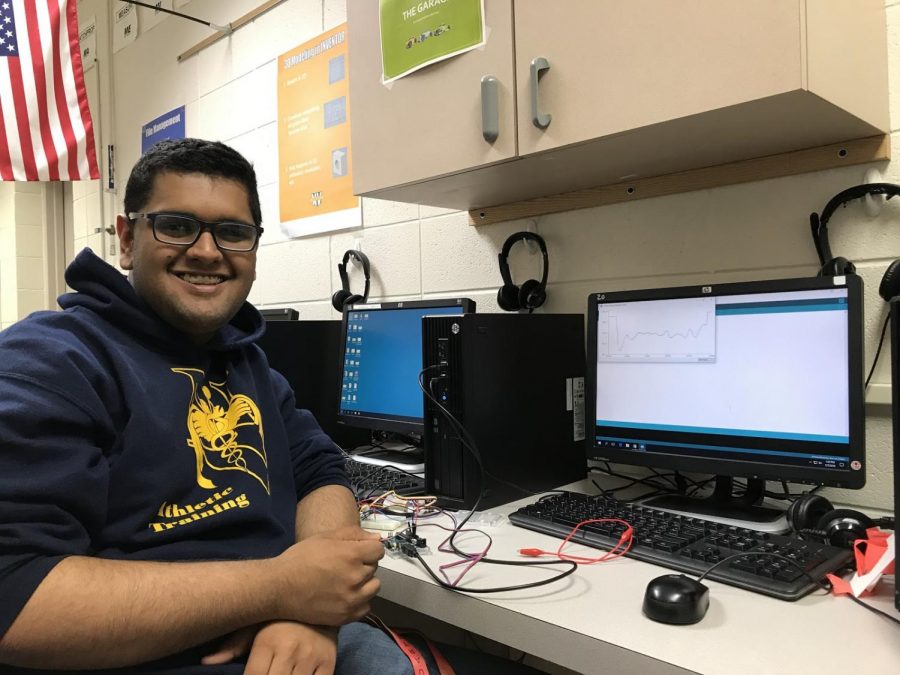Neuqua holds engineering showcase for young engineers
Mukherji demonstrates how the Arduino program helps him to graph the data that the bracelet picks up. The graph featured on the computer is Mukherji’s own results as he tests out the invention on himself.
May 9, 2019
Many students participate in the Project Lead the Way (PLTW) program all throughout their high school years. The final class in this multiple-step process is the Engineering, Design and Development course (EDD) which involves creating one large project that the students work to continually improve throughout the entire year. Anthony Tegtmeyer, a teacher of the PLTW courses, poses the question, “What problem would you like to solve?” to students, and the creative process begins. Once each student comes up with an idea, they spend the next ten months in school trying to prepare their project for the end-of-the-year showcase which serves as the entire final grade for the class. Although other schools in the district have hosted this highly-anticipated showcase in the past, Neuqua recently took on the work of hosting this event on May 1st.
One of the projects featured at the showcase was a bracelet that measures different indicators of stress. Nilesh Mukherji, Neuqua senior, created the item hoping to aid the large population of Neuqua students who suffer from mental illnesses like anxiety and depression. Using a program called Arduino, he could see the graphs of data that the bracelet picks up. Essentially, the bracelet recorded the conductivity of a person through their sweat, which typically increases in stressful situations. He explained how things like anxiety and depression rarely present themselves with visible symptoms like some other conditions, so the bracelet was a way he could turn “qualitative data into quantitative data.” With his invention, Mukherji placed well at the showcase and earned a high grade in the class to top it all off. Regardless of the show case and the EDD class, Mukherji notes, “The most rewarding part in it all is seeing things go from an idea to a working prototype that could actually help people.”
Each student in the class created an invention to answer the question, “What problem would you like to solve?” — a question that has puzzled many individuals. Tegtmeyer describes how much work each student puts into their project as “they slowly build and practice, get feedback on the project and attend local competitions where they can see how well the project holds up against other ideas.” In the end, Tegtmeyer believes that “it helps them to learn real-world skills, communication and problem solving” especially when the constant question hangs in the air, “How do we take [the invention] and make it better?”
The EDD showcase is all about letting this idea of improvement come alive. From reworking smaller problems like keeping coffee hot longer to larger issues like an individual’s struggle with mental health, these young engineers rack their brains for different ways they can change the world. The end-of-the-year showcase reveals what EDD students from all over the district have come up with. Though the exact date for next year’s showcase is uncertain, the years of innovation are only just beginning for these students.


